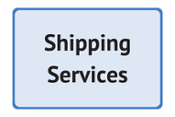It’s December. The holidays are upon us. The new year is looming. We all know what that means.
Time to start planning your 2024 budget.
Actually, if you’ve waited this long to start thinking about next year’s budget, you’re probably already behind the eight ball a bit. While there is no real “best” time to start planning next year's budget, the ideal timeframe is to start the process several months ahead—perhaps as early as six months prior.
Why so early? It allows sufficient time for thorough planning, comprehensive analysis, and critical collaboration with all relevant stakeholders across the company.
However, an early start does not guarantee a perfect or final budget. Things change. Plans fall through. New priorities emerge. As with most undertakings, it’s best to remain flexible. Odds are you’ll need to review and adjust your budget multiple times over the weeks and months—especially if there are significant changes to your business environment, market conditions evolve, or internal operations throw your original plans into chaos.
Despite this lack of predictability, if you are tasked with managing your marketing fulfillment activities or assembling your trade show and event schedule, there are steps you can take to maximize your budget dollars while minimizing churn and improving the overall efficiency of your organization. Not to mention that it makes good economic sense to extract the most possible value out of your marketing investments.
Over the years, we’ve learned a few things about saving money when it comes to printing, shipping, production, storage, and basic event planning and marketing fulfillment programs. The following tips should help you produce a tighter, more cost-conscious budget moving forward—if not for 2024, then beyond.

Budget Planning Tips for Marketing Fulfillment and Event Planning
Some of the following tips are specific to certain activities, such as event fulfillment or printing. Others offer general rules of thumb that you can apply to any general budget planning process. Most are merely common sense. If followed, however, they can help your stretch your budget dollars.
1. Be Decisive
When planning your budget, don’t be wishy-washy. Make the best decisions you can with the information you currently have at your disposal and commit to them as much as possible. Yes, things might change, but they were going to change anyway. Trying to anticipate those changes—or making decisions based on the assumption that changes will happen—is like trying to time the market. Instead, go with what you know at the moment because it’s the best information you’ve got. Remember, last-minute decisions often incur rush charges and risk delays, so avoid them wherever and whenever possible. Which leads us to tip #2…
2. Plan Ahead
There are some changes or developments that are inevitable. One of these is that fact that, at some point, you will run out of inventory on any given item. Let’s take collateral as an example. The beauty of on-demand printing is that it allows you to order only the quantities you need for a given occasion, such as a trade show or conference. While this approach reduces unnecessary waste and shipping, which is great, it may not necessarily be the most cost-effective in the long run. When ordering new collateral, consider its shelf life—is the content expected to change or require updating anytime soon? Will you be needing it for any future events? What is its current consumption rate by the field? By looking ahead, you may be able to justify printing larger quantities now, paying a lower per-piece price that you amortize over several months.
3. Take Advantage of Volume Pricing
The concept of lower volume pricing doesn’t just apply to collateral. When ordering any kind of materials, whether it’s branded merchandise, signage, or collateral, consider purchasing in bulk whenever possible. It’s not difficult to understand that ordering multiple small batches of the same item over the course of a year is a lot more expensive than ordering large quantities offering volume discounts.
4. Consider Longevity
Speaking of promotional merchandise, when ordering branded swag, think about its useful life. Avoid trendy items that are sure to decline in popularity and will inevitably be thrown away (anyone remember fidget spinners?). While you may get an initial boost of brand recognition and attention, it will fade quickly and then your business will be negatively associated with a passing fad. Instead, stick with useful (even if possibly boring) items that you—and the recipient—can continue to use over time. Things like pens, letter openers and the like tend to stick around on the user’s desk, providing a daily reminder of your logo and business.
5. Shipping
 When preparing for an event, shipping is always a considerable expense. However, most people only think about the trip to the venue, often forgetting that when you ship something out, it has to come back. Always remember to build that cost into your overall event budget and negotiate pricing based on a round-trip rather than a one-way journey.
When preparing for an event, shipping is always a considerable expense. However, most people only think about the trip to the venue, often forgetting that when you ship something out, it has to come back. Always remember to build that cost into your overall event budget and negotiate pricing based on a round-trip rather than a one-way journey.
6. Consider the Impact of Your Decisions
Decisions should never be made in a vacuum. Always think about the ramifications of what you are doing. For instance, let’s say you’re staging an event and thinking about what kind of giveaways you want to send. Before making a final decision, consider what it will take to get the items to the venue. A box of tote bags will take up a lot less space than, say, a bunch of posters. That makes them a lot easier (and therefore less expensive) to ship. Or when ordering apparel, polo shirts are more compact and less bulky than, say, sweatshirts. The larger they are, the more expensive they are to ship. Every decision has a budget impact somewhere down the line. This is not to say all decisions should be based on how little they will cost—it’s just something you need to factor into the bigger picture to ensure your budget dollars being spent wisely.
7. Know What You Have in Stock
Before you order any new material—whether it’s corporate-branded coffee mugs or a popular white paper—always check your inventory first. You may already have what you need in storage. It’s surprisingly easy to forget what you have on hand, especially if you’re managing hundreds of items and they are all stored offsite in a warehouse somewhere. If you have access to reports and real-time online inventory numbers (and any worthy fulfillment partner should offer such a service), take five minutes to make sure you don’t already have it in stock. It might save you thousands of dollars.
8. Share Expenses Whenever Possible
Your department isn’t the only one benefiting from all the materials you order and maintain. If budgets are tight, consider asking other departments who are frequent users of your items if they might be willing to contribute a few dollars to help you defray some of the production costs. Not only does this spread the burden across multiple departments, it also usually results in higher quantities, which translates into better pricing.
Planning to Succeed
Budgeting should align with your organization's overall strategic planning process. By starting the budgeting process well in advance, you can gather the necessary data to help you make informed decisions that contribute to a more accurate and actionable budget. And by following these tips, you can contribute to the company’s bottom line by spending more wisely and efficiently.
Learn how OnFulfillment can help you further maximize your budget dollars with comprehensive marketing fulfillment, event management, branded swag, printing, shipping, and storage services.



